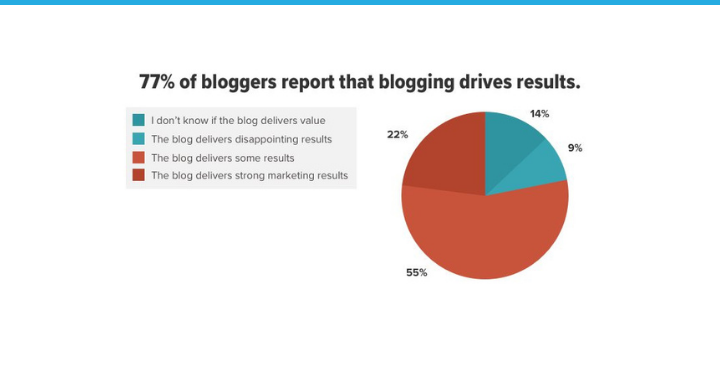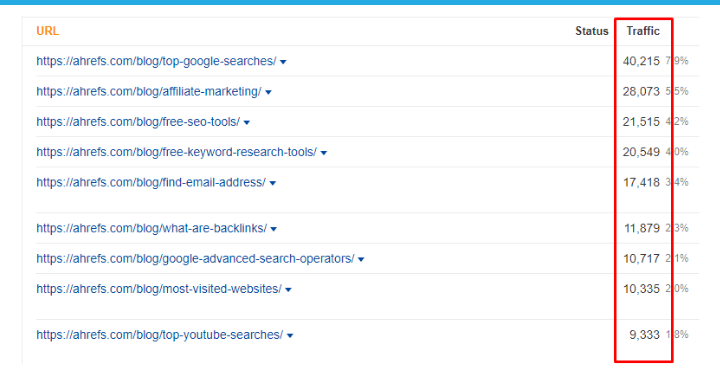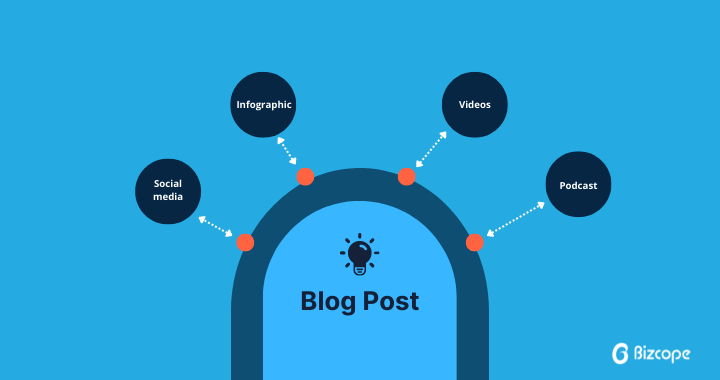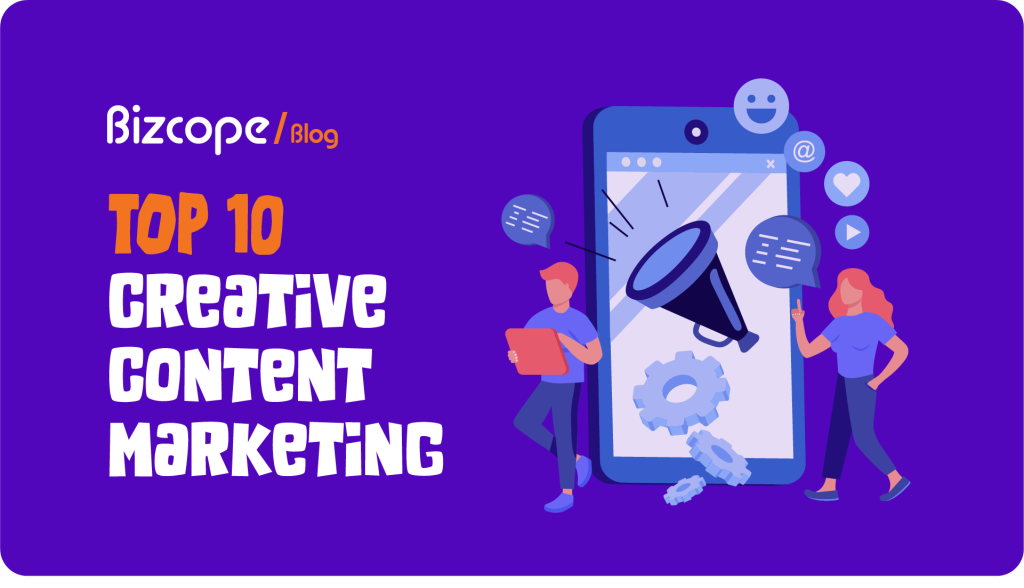In today’s business environment, winning and retaining customers requires a strong online presence. How you present your brand online influences whether and how customers interact with you. Will they buy, or will they skip to your competitors?
Content marketing often depends on your target audience and your brand priorities. Content can be used for creating awareness, driving sales, and public relations among others.
In this article, we examine the different kinds of creative content marketing and why they work.
Let’s dive right in.
When it comes to generating leads for your business, content marketing can drive you more business than traditional marketing. Today we will explore 10 different types of content marketing strategies.
1. Blogging
Blogging has been the leading way to do content marketing and with the best results for decades. However, one question many people ask when setting up their online presence is whether blogging is still worth it in 2022.
The short answer is YES! And the reasons why blogging still works are many. Here are some of the top reasons blogging remains one of the best creative content marketing methods of 2022 and beyond:
Blogging Drives Traffic

Creative blog posts pique readers’ interest and drive traffic to your website, landing pages, and product pages.
Your website’s other pages are mostly static. They are pages about your business and services. They are not really exciting for outsiders, and thus, they don’t inspire visitors.
Your blog posts on the other hand aren’t static. They are not static, but dynamic. The blog changes each time you update a new post. This keeps readers interested and coming back for more.
The more visitors come to your website, the stronger your web presence grows. In turn, the higher Google and other search engines index and rank your pages and the easier web users find you.
Ahrefs are attracting huge traffic through blogging –

Blogs Can Repurpose Content

Blog can be used to share the content you have prepared for other platforms. Alternatively, you can use other content to repurpose your blog content. For example, you can create a Facebook post promoting one of your products, then create a blog post giving more details and explaining more benefits of the product.
Blogs Drive Conversions
Blog posts are perfect for turning your web visitors into paying customers. Every blog post is a chance to generate new sales leads. A strong call to action placed within the blog post can drive reader action for your sales and marketing teams to follow up.
You Own the Blogging Platform
One of the most important reasons for having a blog is it resides on your platform.
Remember, each time you post on social media or elsewhere, you are at the mercy of the platform admins and the underlying algorithms. The social media platform may not show your content in their feeds and in some cases may hide or ban your content.
With a blog, you are fully in charge of what appears on your reader’s feeds and what content they see in your main pages.
Blogging Drives SEO
Blogs help make your website rank higher on search engines. You can use your blog to promote keywords relating to your business and boost your search engine optimization (SEO) strategy.
Additionally, you can use your blog to earn backlinks from authority websites. Backlinks are among the top 200 factors which Google algorithms consider for indexing and ranking a site on search engine result pages (SERPs).
Blogging Drives Long-Term Results
Blog posts often drive business results long after you create and publish. Your blog posts will continue marketing your brand and products for as long as your blog exists.
In contrast, marketing content on other platforms disappears soon after publishing to give way to newer content. For example, your video on TikTok may trend for a day or two but be forgotten within a week. Your blog posts keep attracting new visitors even years later. Especially if the blog post keeps ranking higher and higher on search engines.
Great for PR
Your blog is the perfect platform for sharing company news and communicating with the public. Your blog doesn’t just sell your products, you can also use it for making announcements, introducing your members to the public, and promoting charity and company social responsibility (CSR) activities.
Why it works: Blogging allows you to share frequent updates and rank for more keywords online.
It also positions your business as an authority in your industry and helps you provide value for customers.
2. Videos
Videos keep growing as a form of creative content marketing. According to WYZOWL, over 88% of marketers plan to use YouTube in their 2022 video marketing strategy.

Reports indicate that over 88% of people have been convinced to buy a product through watching a video in 2022. And 96% of customers have watched an explainer video to learn more about a product, service, or brand. Here are the different ways to use video in your content marketing:
Social Media Videos
Brands post fun videos on social media platforms such as Instagram, TikTok, Facebook, and Twitter.
Online Video Platforms
YouTube and Vimeo lead in video platforms used by brands for creative content marketing.
App Demo Videos
Brands create beautiful videos which show how a mobile app works and looks. These help increase app downloads, service upgrades, and reviewing scores.
Onboarding Videos
Brands use creative videos to show customers and new staff members how a SaaS service and other products work. Onboarding videos also help new staff members in understanding an organization’s workflow and hierarchy.
Animated Videos
You want to create marketing videos without the hustle of hiring actors and venues? Then animated videos might be exactly what you’re looking for. They enable brands to control the scenery, character design, and soundtracks at minimal costs.
Explainer Videos
Explainer videos are popular because they allow a brand to explain a concept or product within seconds. They work because they communicate important key points and create immediate comprehension, even as videos compete for today’s viewers’ fleeting attention spans.
Why it works: Video marketing improves your company’s reach and engagement, while giving viewers an inside look at your products, services, and culture. You’re also 53 times more likely to rank on the first page of Google search results if your site includes video content — so it packs a powerful SEO punch.
3. Images
Images are great for marketing. They convey strong messages in an instant, without requiring lots of time or concentration from the viewer. An image can be used to invoke emotions, provoke action, and stir desires.
Images work in content marketing because they are memorable, shareable, and boost open and engagement rates. The types of images that work best in creative content marketing include:
Stock Photos
These are the easiest to source. They are professional photos posted online, available for personal use. There are several types of licenses to legally use a stock photo. These are:
- Creative commons: You can use the image free of charge without attribution, through best practice is to attribute the source.
- Editorial use: You can use the image free of charge for editorial use. You can’t use the image for commercial purposes.
- Public Domain: Similar to creative commons without need for attribution.
- Royalty-free: You can use the image for any purpose, even commercial, without editing or selling it.
- Rights-managed: You can use the image once after purchase, but can’t repurpose it or use it more than once.
Infographics
These are image illustrations that also contain explanatory texts. Infographics often include data representations and are used to illustrate a story or blog summary.
GIFs
A graphic interchange format (GIF) is an animated image featuring some moving parts of an image or video. They are often funny, brief, and play on a loop. You can create your own GIF or download one from an online library such as GIPHY.
Memes
Memes are still images, often with captions. They are usually entertaining, often bordering on the ridiculous aspects of human culture and lifestyle.
They are intended for quick consumption and are highly shareable. The most successful memes go viral in an instant and can be shared worldwide, riding on a wave of shared interest. Memes are cheap to create yet can contain a powerful message that resonates instantly with an audience.
Why it works: Custom images and infographics set your content apart from competitors’ pages, showcase your brand’s personality, and boost content views.
4. White Papers
In many early parliamentary democracies, politicians and activists would produce legislative documents to explain and support a political position or solution. In modern times, marketers use white papers to explain how a product or service offers solutions to particular customer pain points.
White papers are scientifically researched authoritative documents. They are designed to be persuasive, so they are written by copywriters rather than scientific researchers. White papers work for marketing because they are advanced problem-solving manuals which explain solutions in-depth.
E-Books
E-books share some similarities with white papers. They both describe problems and offer solutions when used in content marketing. Some differences include:- White papers use more formal language, while e-books can be informal.
- White papers are more fact and science-based, while e-books can be opinion-based.
- White papers often appeal to a niche audience of industry experts, while e-books are an extended guide for the general population.
- An e-book is easier to understand, while a white paper can be more technical and contextually rich.
- E-books are cheaper to produce compared to white papers.
Why it works: Ebooks and guides provide value to potential customers, while positioning you as an industry leader. You can also use long-form content to grow your email list and follow up with people who download.
5. Case Studies
Most consumers trust the recommendations of other users before they make a buying decision. They want to know whether a product offers the exact solution they seek and how it performed.
A case study is a detailed review of product performance or service delivery. Case studies work because they offer social proof. They give buyers some context on whether they will get good value for their purchase.
Why it works: Case studies allow you to demonstrate the results you drive for clients, and they provide social proof that encourages people to work with you.
6. Podcasts
Podcasts are online interviews that are informative, educational, and often entertaining too.
Users can listen to podcasts when driving, when exercising, when walking, when doing house chores, or even when commuting. Web users are increasingly turning to podcasts because it’s easier to listen to than to read a blog post or watch a vlog.

Podcasts can boost SEO page rankings. They are also great for establishing authority and subject expertise. Podcasts can be interactive when users call in or send comments and questions to engage the host and guest.
Why it works: Podcasting provides a unique channel for reaching more customers, and it positions you as an expert in your field.
7. Webinars
Webinars are much more than online seminars. They are interactive online meetings between brands and their existing and potential customers.
Unlike physical events, webinars work because they address a broad market segment, allow attendees to interact from anywhere in the world, invite instant feedback to improve products and services, and are not as costly or time-consuming.
Additionally, webinars can be stored and replayed, so everyone can catch what they initially missed. Plus, your audience size isn’t limited by physical resources such as venue size, food catering, overnight accommodation, or parking space.
Webinars are great online tools for:
- Lead generation
- Social proof and word of mouth marketing
- Community building
- Immersive and interactive customer engagement
- Establishing trust and authority
Why it works: Webinars help potential customers learn more about your offerings and serve as valuable resources for existing customers. Not to mention, they demonstrate your authority and allow you to partner with key figures in your industry.
8. Social Media
Social media is currently one of the top marketing channels for brands across the world. Social media boosts customer engagement, builds community, and boosts brand visibility.

In the past, marketers would just post and maybe respond to comments. Nowadays, marketers are doing much more to engage and retain followers and nurture leads. Some social media marketing trends driving business results in 2022 include:
- Community building
- Live-streaming
- Influencer marketing
- Social media paid ads
- Shopping and unboxing events
- Employee advocacy
- Immersive AR & VR experiences
9. User-Generated Content
Many customers post their purchases and experience online to share with their friends, families, and online communities. A study by TurnTo Networks reveals that 90% of customers view user-generated content as more persuasive compared to email newsletters and search engine results.

User-generated content works because most internet users don’t trust advertisers and marketers. Marketers are paid to paint a product or service in its best light. Users on the other hand provide unbiased content. Users will highlight both positive and negative aspects, leading to a better-informed buyer.
10. Downloadable Resources
Downloadable resources are very effective marketing lead magnets. A lead magnet is any incentive you give your audience in exchange for their contact information or to follow your brand or join your community. The best performing lead magnets are downloadable resources. The best downloadable creative content you can use as lead magnets include:
- E-books
- Marketing strategies
- Productivity and scheduling tools
- Brand strategies
- Worksheets with specific actions to drive a specific result
- Checklists for easy-to-follow steps in implementing a project or strategy
- Templates which you can customize to your personal or brand needs
- Printable resources such as posters. For example, a poster of a favorite superhero
- Planners such as the ones used for goal setting and strategy building.
- Cheat sheets which enable users to simplify an otherwise complex process
Sum Up
In today’s internet environment, brands are battling for consumers’ attention in many ways. There are many creative content marketing methods, and it’s often difficult for a brand to succeed using just one or two content types.
The content types discussed in this guide explain the differences between the content types. The guide goes further to define why each type of content works while offering suggestions on how you can use them to market your brand. Read on and tell us your favorite marketing content and how you apply it for your brand’s success.

